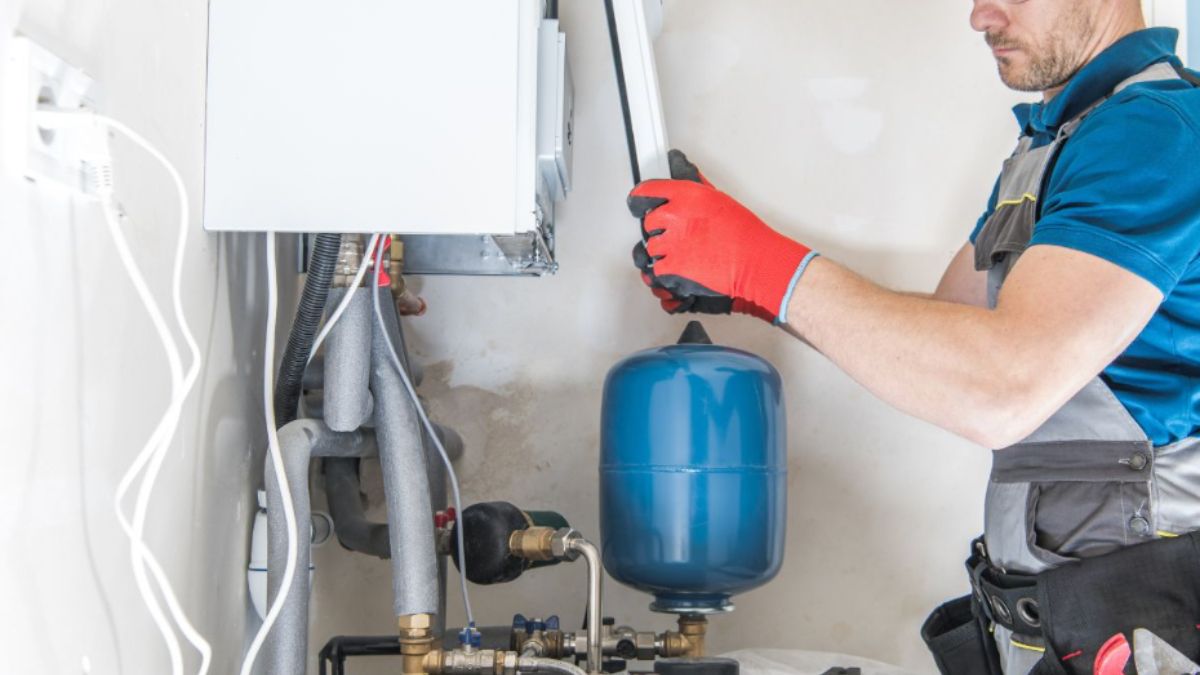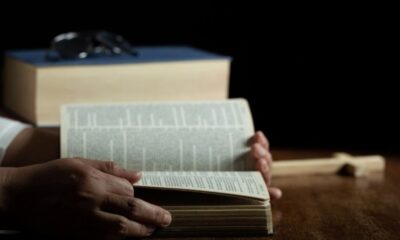TOPIC
You Might Need to Replace Your Water Heater

Replacing your water heater might sound like a big, intimidating task, but with the right knowledge and a solid plan, it can be a smooth and rewarding experience. Whether you’re replacing an old tank water heater or upgrading to a modern tankless system, this water heater replacement guide will equip you with all the essential information. From understanding the different types of water heaters to navigating the installation process, this guide will make sure you’re prepared for every step—whether you decide to tackle the project yourself or bring in a professional plumber. Let’s dive in and make this essential home improvement both easy and efficient!
Why You Might Need to Replace Your Water Heater
Before diving into the replacement process, it’s important to understand why your water heater might need replacement. Common reasons include:
- Age: Traditional water heaters typically last 10-15 years. If yours is nearing or exceeding this age, it’s probably time for a replacement.
- Leaks: Water pooling around the base of the heater often signals a leak that cannot be repaired.
- Rust or Sediment Buildup: If your water heater produces rusty or discolored water, it’s a sign of internal corrosion or sediment buildup.
- Inefficiency: If your unit is no longer providing sufficient hot water or is using more energy than usual, a replacement may be necessary.
Step 1: Choose Your New Water Heater
The first step in replacing a water heater is deciding which type to install. You can choose between a traditional tank water heater or a more modern tankless option.
- Tank Water Heater: These are the most common type of water heater. They store hot water in a tank and supply it as needed.
- Tankless Water Heater: This type heats water on demand, providing an endless hot water supply while saving space and energy. It’s ideal for smaller homes or those with high water usage needs.
Once you’ve decided which system works best for your needs, make sure to select a unit with the correct capacity. A water heater that’s too small won’t meet your needs, while a unit that’s too large may waste energy.
Step 2: Turn Off the Power and Water Supply
Before you start the replacement process, ensure safety by turning off the power supply to the water heater. If you have an electric water heater, switch off the breaker at your electrical panel. For gas water heaters, turn off the gas supply valve.
Next, turn off the water supply to the heater by closing the shutoff valve, which is usually located near the top of the tank. It’s important to release any pressure in the system before proceeding.
Step 3: Drain the Water Heater
Draining your old water heater is crucial to avoid spills and to prepare the unit for removal. Connect a garden hose to the drain valve at the bottom of the tank, and direct it to a nearby floor drain or outside. Open the valve and allow the tank to empty completely. You may need to open the pressure relief valve to help the water drain more easily.
Step 4: Disconnect the Old Water Heater
Once the tank is drained, disconnect the water heater from the plumbing and electrical connections. For electric units, disconnect the wiring by removing the access panel at the top of the unit. For gas units, disconnect the gas line using a wrench. Always check for any gas leaks before proceeding.
After the connections are safely disconnected, you can remove the old water heater from its position. This step may require some assistance, as water heaters can be heavy.
Step 5: Prepare the Space for the New Water Heater
Before installing the new unit, take a moment to inspect the area where the old heater was located. Ensure the space is clear of debris and that all connections are accessible. If you are switching from a tank water heater to a tankless system, you may need to make adjustments to the plumbing, ventilation, or electrical setup.
Step 6: Install the New Water Heater
- For Tank Water Heaters: Start by positioning the new unit in place. Connect the cold water supply pipe to the inlet and the hot water pipe to the outlet on the top of the tank. Tighten all fittings securely to prevent leaks. Once the plumbing connections are complete, connect the electrical or gas supply.
- For Tankless Water Heaters: Install the tankless unit according to the manufacturer’s instructions. These units often require a larger gas line or a dedicated electrical circuit. Make sure to install the necessary venting system for proper exhaust.
Step 7: Test the New Water Heater
Once your new water heater is installed, it’s time to test the system. Turn on the water supply and check for leaks around all connections. For electric models, turn the power back on, and for gas models, open the gas valve and relight the pilot light if needed. Set the thermostat to your desired temperature and allow the system to fill with water.
It may take some time for the unit to heat up the water fully, so be patient. Once the water reaches the set temperature, check the system again for proper functionality and make sure there are no leaks.
Step 8: Clean Up and Dispose of the Old Heater
Once you’ve confirmed that the new unit is working properly, clean up the installation site and dispose of the old water heater. Contact a local recycling center to ensure that the unit is disposed of properly.
DIY Water Heater Replacement vs. Professional Installation
While DIY water heater replacement is an option for some homeowners, there are a few things to keep in mind before proceeding with the replacement yourself:
- Skills and Tools: Installing a new water heater requires specialized knowledge, tools, and experience. Incorrect installation can result in leaks, water damage, or unsafe conditions.
- Local Codes and Permits: Depending on your area, you may need a permit for the installation. Be sure to check with local authorities.
- Safety: Gas lines and electrical systems require specialized training to handle safely.
If you are unsure or uncomfortable with any part of the installation process, hiring a professional plumber is always a safe option.
Replacing a water heater is a manageable project for homeowners who are comfortable with DIY tasks, but it requires attention to detail and strict adherence to safety procedures. Whether you are replacing an old water heater with a more energy-efficient model or switching to a tankless unit, following this step-by-step guide will help you achieve a successful installation. If you’re ever in doubt, don’t hesitate to reach out to a professional plumber to ensure the job is done correctly.
Recommended SEO Title: Step-by-Step Guide to Replacing Your Water Heater: A Complete DIY and Professional Installation Guide
Recommended Meta Description: Discover how to replace your water heater with this detailed step-by-step guide. Whether you’re installing a tank or tankless system, get expert tips for success.
Recommended Featured Snippet: Replacing a water heater involves turning off the power and water supply, draining the tank, disconnecting old plumbing, and installing the new unit. Always test the system before disposing of the old water heater.
Recommended H1 Tag:
Step-by-Step Guide to Replacing Your Water Heater
TOPIC
The Art of Provocation: What We Can Learn from naomigetsnasty

Introduction to naomigetsnasty
In a world where beauty standards often feel rigid and confining, artists like naomigetsnasty are shaking things up. With an unapologetic flair, she explores the intersection of art and self-expression through provocative visuals that challenge societal norms. Her work invites us to rethink what it means to be beautiful, pushing boundaries in ways that leave viewers both captivated and questioning. Let’s dive into the fascinating realm of naomigetsnasty and discover how her bold approach offers valuable lessons on defiance, empowerment, and creativity in today’s digital age.
Defying Traditional Beauty Standards
Naomigetsnasty boldly challenges the traditional norms of beauty that have long dominated our culture. She embraces imperfections and celebrates individuality in ways that many find refreshing.
Her art is a vibrant tapestry woven from diverse experiences and perspectives. It reflects an understanding that beauty is not one-size-fits-all; rather, it’s a spectrum filled with unique expressions.
By showcasing unconventional aesthetics, she invites others to question societal expectations. This defiance breaks barriers and encourages conversations around body positivity and self-acceptance.
In her world, authenticity reigns supreme. Every blemish or oddity becomes part of a larger narrative about what it means to truly love oneself.
Through her provocative imagery, naomigetsnasty inspires countless individuals to redefine their own perceptions of beauty—moving beyond narrow confines toward a more inclusive celebration of diversity.
Creating Controversy and Sparking Conversations
naomigetsnasty thrives on controversy. Each post challenges the status quo, inviting audiences to engage in dialogue. This approach transforms passive viewers into active participants.
Provocative imagery and bold statements are her tools. They create discomfort, pushing boundaries that many fear to explore. By addressing taboo subjects, she opens doors for important conversations about body image, sexuality, and societal norms.
The reactions can be intense—some applaud her courage while others criticize her methods. Yet this tension is where meaningful discussions emerge.
Followers find camaraderie in shared experiences of resilience and defiance against conventional beauty standards. The dialogues sparked by naomigetsnasty become spaces for exploration and understanding.
In a world craving authenticity, her art becomes a catalyst for change—a reflection of how challenging perspectives can lead to growth and awareness among diverse communities.
Using Provocation for Self-Expression and Empowerment
Provocation as a form of self-expression is powerful. It allows individuals to break free from societal constraints. This is where naomigetsnasty thrives.
She embraces boldness, using her platform to challenge norms. Each post invites viewers to reflect on their perceptions of beauty and identity. By pushing boundaries, she encourages others to do the same.
Empowerment comes from owning one’s narrative. When we express ourselves unapologetically, we take control of our stories. Naomigetsnasty exemplifies this idea through her art and messaging.
Her work resonates with those seeking authenticity in a world full of filters and facades. Provocative artistry becomes an act of rebellion against conformity.
This journey toward self-acceptance inspires many followers who find strength in vulnerability. They learn that their voices matter and can spark change within themselves and beyond.
The Impact of Social Media on Provocative Artistry
Social media has revolutionized the landscape of provocative artistry. Artists like naomigetsnasty leverage platforms to challenge norms and push boundaries with their work.
The immediacy of social media allows for real-time feedback. This interaction fosters a dynamic relationship between artists and audiences, where reactions can shape future creations.
Visual content spreads rapidly online. A striking image or bold statement can go viral in minutes, amplifying an artist’s voice far beyond traditional galleries.
Moreover, these platforms democratize art distribution. Anyone can create and share provocative pieces without needing gatekeepers or institutional support.
This accessibility encourages diverse perspectives. It opens doors for marginalized voices while inviting discussions that may have been silenced elsewhere.
Social media acts as both canvas and megaphone—empowering creators to provoke thought and inspire change on a global scale.
Lessons We Can Learn from naomigetsnasty
naomigetsnasty teaches us the power of authenticity. Embracing who you truly are can be liberating. Her unapologetic approach encourages individuals to break free from societal expectations.
Engagement is another vital lesson. By sparking conversations, she invites her audience into a dialogue about beauty standards and self-expression. This interaction fosters community and shared experiences.
Creativity thrives in provocation. naomigetsnasty shows that art doesn’t always have to be pretty or palatable; it can challenge norms and provoke thought.
Resilience shines through her work. Facing criticism with confidence demonstrates strength and determination, inspiring others to stand firm in their beliefs regardless of opposition.
These lessons remind us that there’s immense value in being bold and daring to express oneself fully.
Conclusion
The journey of naomigetsnasty is a vivid exploration of self-expression and the challenge against societal norms. Through bold artistry, she embodies the idea that beauty can be diverse and multifaceted. By defying traditional standards, she creates a space for dialogue around body positivity.
Her work ignites conversations that often go unaddressed in conventional media. This act of provocation invites us to reflect on our own perceptions and biases regarding beauty and identity. It pushes boundaries while empowering individuals to embrace their authentic selves.
In today’s digital landscape, social media serves as a powerful platform for provocative artistry like hers. It fosters connection among those who feel marginalized by mainstream ideals, allowing them to find community and strength through shared experiences.
From naomigetsnasty’s distinct style and approach, we glean important lessons about courage in creativity. Her ability to spark controversy serves not just as art but also as activism—challenging viewers to reconsider what they deem acceptable or beautiful.
Embracing such provocations can lead us all toward greater acceptance and understanding in our lives. As we navigate this complex world together, let her message resonate: being unapologetically oneself is an artwork worth celebrating.
TOPIC
Why Sinkom is the Next Big Thing in Social Networking

Introduction to Sinkom – what is it and how does it work?
Welcome to the future of social networking! Say hello to Sinkom, a platform designed not just for connection but for meaningful interaction. In today’s fast-paced digital world, it can be tough to find a space that truly resonates with your interests and values. Sinkom steps in as the answer—bringing people together in innovative ways.
Imagine a place where you can share experiences, explore new ideas, and engage with like-minded individuals effortlessly. Whether you’re looking to connect with friends or expand your professional network, Sinkom is here to elevate your online experience. With its fresh approach and user-centric design, it’s no wonder this platform is making waves across the globe.
Let’s dive deeper into what makes Sinkom special and why it might just become your go-to social hub!
The Unique Features of Sinkom
Sinkom stands out with its innovative approach to social networking. One of its most intriguing features is the “Interest Clusters.” This allows users to connect based on shared passions and hobbies, creating smaller communities where meaningful interactions thrive.
Another unique aspect is the “Dynamic Profiling” system. Instead of static profiles, user information adapts in real-time based on activity and engagement levels. This keeps content fresh and relevant.
The platform also emphasizes privacy through customizable settings that let users control who sees their posts. With advanced filtering options, you can curate your feed more effectively than ever before.
Gamification elements are woven throughout Sinkom as well. Users earn badges for participation, unlocking new features and encouraging consistent interaction within their networks. These aspects create an engaging environment that feels rewarding rather than obligatory.
How Sinkom is Different from Other Social Networking Platforms
Sinkom stands out in the crowded landscape of social networking by prioritizing user experience and authentic connections. Unlike traditional platforms that often emphasize likes and shares, Sinkom fosters meaningful interactions through its unique engagement model.
The platform’s design encourages users to participate in discussions rather than simply scrolling. This shift promotes deeper conversations and a sense of community among members.
Moreover, privacy takes center stage with enhanced security features. Users have greater control over their data, which is becoming increasingly important today.
Additionally, Sinkom integrates innovative tools for collaboration that empower creators and professionals alike. Its focus on building networks based on shared interests sets it apart from others that rely heavily on algorithms to dictate content visibility.
This fresh approach invites users to explore new relationships while providing a safe space for genuine communication.
The Benefits of Using Sinkom
Sinkom offers a refreshing approach to social networking. Users can connect in meaningful ways that go beyond superficial interactions. The platform fosters genuine relationships by prioritizing shared interests and values.
Another key benefit is its robust privacy settings. Sinkom empowers users with control over their data, allowing them to choose who sees what. This builds trust and encourages more open communication among friends and followers.
Additionally, the user-friendly interface makes navigation seamless. Whether you’re new to social media or a seasoned pro, finding your way around Sinkom feels intuitive.
Engaging features such as community groups enhance collaboration. These spaces allow like-minded individuals to share ideas and resources without distractions from irrelevant content.
The opportunity for growth is boundless on Sinkom. With tools designed for creators and entrepreneurs, it serves as an excellent platform for showcasing talents while connecting with potential collaborators or clients.
Case Studies: Success Stories on Sinkom
Many users have discovered remarkable success on Sinkom. One such story features a local artist who gained visibility through engaging content and community interaction. By sharing her creative process, she attracted thousands of followers and secured collaborations with established brands.
Another inspiring case involves a small business owner. After creating a profile on Sinkom, he connected directly with potential customers by showcasing his products in innovative ways. His sales skyrocketed as he tapped into the platform’s unique networking opportunities.
A fitness coach utilized live sessions to engage audiences effectively. Through personalized tips and motivational posts, she built a loyal following that translated into expanded client reach both online and offline.
These stories highlight how diverse users leverage Sinkom’s features for growth and connection, proving that the platform is not just another social network but a powerful tool for achieving personal and professional goals.
Tips for Creating an Engaging Profile on Sinkom
Creating an engaging profile on Sinkom is essential to stand out in the crowd. Start with a captivating profile picture that reflects your personality. A genuine smile can go a long way in attracting connections.
Next, craft a bio that tells your story. Use concise language and include interesting facts about yourself or hobbies that resonate with others. This creates opportunities for conversations based on shared interests.
Don’t forget to add multimedia elements like photos or videos showcasing your passions—music, travel, or art. These visuals make your profile more dynamic and inviting.
Engage with other users by sharing thoughtful posts related to trending topics or personal insights. Consistent interaction keeps you visible and encourages others to connect.
Update your profile regularly as you grow and change. An authentic representation of who you are will attract the right followers naturally.
Conclusion: Why You Should Join Sinkom Today
Joining Sinkom could be a game-changer for your social networking experience. This platform offers innovative features designed to foster genuine connections, making it stand out in a crowded market. By engaging with communities that align with your interests, you can expand your network and enhance personal growth.
The unique functionalities of Sinkom empower users to share their thoughts in creative ways, promoting authentic interactions over superficial likes or comments. The focus on enriching user experiences sets this platform apart from its competitors.
Moreover, the benefits are tangible. Whether you’re looking for niche communities or simply wanting to connect meaningfully with others, Sinkom delivers on all fronts. Success stories abound among its growing user base, showcasing not just individual achievements but also community engagement at its finest.
Creating an engaging profile is straightforward and intuitive, allowing you to express yourself authentically. With each interaction on Sinkom, there’s potential for learning and collaboration that traditional platforms often lack.
Choosing to join this vibrant community might just be one of the best decisions you make this year in enhancing both your online presence and personal connections. Don’t miss out on what could become the cornerstone of tomorrow’s social networking landscape—explore everything that Sinkom has to offer today!
TOPIC
The Rise of Fascisterne: Analyzing Modern-Day Implications

Introduction to Fascisterne
In recent years, there’s been a noticeable resurgence of movements that echo the sentiments and ideologies of fascism. This phenomenon, often referred to as “Fascisterne,” is not just a relic of history but an evolving force in contemporary society. As we navigate through divisive political landscapes and social unrest, understanding Fascisterne becomes crucial. What does it mean for our communities? How can we recognize its signs today? Join us as we delve into the historical roots and modern implications of this powerful ideology, shining a light on why it’s more relevant than ever to confront these challenges head-on.
Historical Origins of Fascism
Fascism has deep historical roots, tracing back to early 20th-century Europe. It emerged in response to political instability, economic turmoil, and social upheaval following World War I.
Italy is often heralded as the birthplace of fascist ideology. Benito Mussolini’s rise marked a significant shift toward authoritarian governance. His regime emphasized nationalism and militarism, drawing inspiration from earlier movements that prioritized state over individual rights.
The aftermath of the Great Depression further fueled fascist sentiments across nations. Economic despair made radical ideologies appealing for many seeking solutions amidst chaos.
Meanwhile, Germany witnessed a parallel ascent with Adolf Hitler’s National Socialism. This movement entwined traditional nationalist ideals with an aggressive racial agenda, leading to catastrophic consequences during World War II.
These origins set the stage for modern reflections on fascism—an ideology that continues to provoke debate today as echoes of its principles resurface globally.
Modern Examples of Fascist Ideologies
Fascist ideologies have resurfaced in various forms across the globe. One notable example is the rise of far-right political parties in Europe. These groups often emphasize nationalism, anti-immigration policies, and a disdain for multiculturalism.
In North America, certain movements embrace similar rhetoric. They advocate for strict immigration controls while promoting an “us versus them” mentality that resonates with disillusioned citizens.
Social media has also played a crucial role. Online platforms amplify extremist views, allowing fascist narratives to spread quickly and gain traction among younger audiences.
Additionally, some governments adopt authoritarian tactics reminiscent of historical fascism. Surveillance measures increase under the guise of national security, stifling dissent and eroding civil liberties.
These modern manifestations remind us that fascist ideologies can adapt and evolve but remain rooted in division and exclusionary practices.
Impact on Society and Politics
The rise of fascisterne has profound effects on both society and politics. It fuels division within communities, fostering an environment where intolerance thrives. Cultural identities become battlegrounds, often pitting neighbor against neighbor.
Politically, the influence is equally alarming. Populist movements gain traction by exploiting fears and insecurities among citizens. This shift can erode democratic institutions, leading to authoritarian governance disguised as nationalistic fervor.
Public discourse suffers as hate speech becomes normalized. Dissenting voices are silenced under the guise of patriotism or stability, stifling healthy debate.
Moreover, marginalized groups face increased risks and hostility. The impact on their lives ripples through society—affecting mental health and community cohesion.
Understanding these implications is crucial for recognizing the urgency of addressing fascisterne today. Only then can we engage in meaningful conversations that promote unity rather than division.
The Importance of Recognizing and Addressing Fascism
Recognizing fascism in its modern form is crucial for a healthy society. It often disguises itself within populist rhetoric and extremist views. Awareness can help individuals identify the signs before they escalate.
Addressing these ideologies requires collective vigilance. Citizens must engage in open dialogue about their implications and roots. Ignoring these threats only allows them to fester, potentially leading to greater societal division.
Education plays a pivotal role here. Teaching history helps contextualize current events, enabling people to draw parallels between past and present movements.
Moreover, communities should foster inclusivity while challenging hateful narratives. Strong social cohesion acts as a buffer against rising extremism, empowering individuals to stand united against divisive forces.
By being proactive, we create an environment that prioritizes democracy over dictatorship. This commitment ensures that everyone’s voice contributes positively to shaping our future.
Strategies for Combating Fascism in Today’s World
To combat fascism effectively, education plays a crucial role. Understanding the signs and ideologies associated with fascisterne can empower individuals to recognize threats before they escalate.
Community engagement is also vital. Building strong networks that promote inclusivity helps counter divisive narratives. Encourage dialogue among diverse groups to foster understanding and solidarity.
Digital literacy must not be overlooked. Misinformation often fuels extremist views online. Teaching critical thinking skills equips people to question sources and discern fact from fiction.
Support local organizations dedicated to human rights and social justice. They are at the forefront of resistance against oppressive regimes. Volunteering or donating can amplify their efforts significantly.
Participating in peaceful protests sends a powerful message against hate ideologies. Collective action demonstrates unity in diversity, creating a safer environment for all citizens to thrive without fear of oppression or discrimination.
Conclusion: Why We Must Learn from History and Stand Against Fascism
The lessons from history are clear. Fascism, in its various forms, has caused immense suffering and division throughout the world. As we witness the rise of fascisterne today, it is crucial to understand the implications this ideology can have on society and politics.
Awareness is our first line of defense. Recognizing the signs allows us to confront these ideologies before they take root in our communities. It’s essential for individuals to engage in open dialogue about these issues and educate themselves on historical contexts.
Moreover, action must follow awareness. Communities need strategies that promote inclusion over exclusion, understanding over ignorance. Supporting local initiatives that celebrate diversity can create a bulwark against extremist views.
History teaches us that silence often facilitates oppression; vocal opposition is necessary for progress. By remembering past atrocities associated with fascism, we empower ourselves to act decisively when faced with similar threats today.
Standing against fascisterne isn’t simply an individual responsibility but a collective one as well—one rooted in empathy and shared humanity. Each small step taken towards unity helps pave the way for a future free from hate-driven ideologies where everyone can thrive without fear or discrimination.
-

 TECHNOLOGY2 weeks ago
TECHNOLOGY2 weeks agoTop 10 Must-Read Stories from Kristen Archives You Can’t Miss
-

 TECHNOLOGY6 months ago
TECHNOLOGY6 months agoSky Bri Net Worth Revealed: How She Built Her Financial Empire
-

 TOPIC8 months ago
TOPIC8 months agoBasement Renovation Contractors: How They Tackle Structural Issues During Renovations
-

 TOPIC3 months ago
TOPIC3 months ago5 Reasons the //Vital-Mag.Net Blog Dominates Lifestyle
-

 TOPIC1 month ago
TOPIC1 month agoTop 10 Articles from the ://Vital-Mag.net Blog That You Can’t Miss
-

 CRYPTO5 months ago
CRYPTO5 months agoCrypto30x.com Review: Is It the Right Platform for You?
-

 BUSINESS2 weeks ago
BUSINESS2 weeks agoTraceLoans Explained What You Need to Know
-

 BUSINESS4 weeks ago
BUSINESS4 weeks agoDecoding the Kennedy Funding Ripoff Report: Facts vs. Fiction

